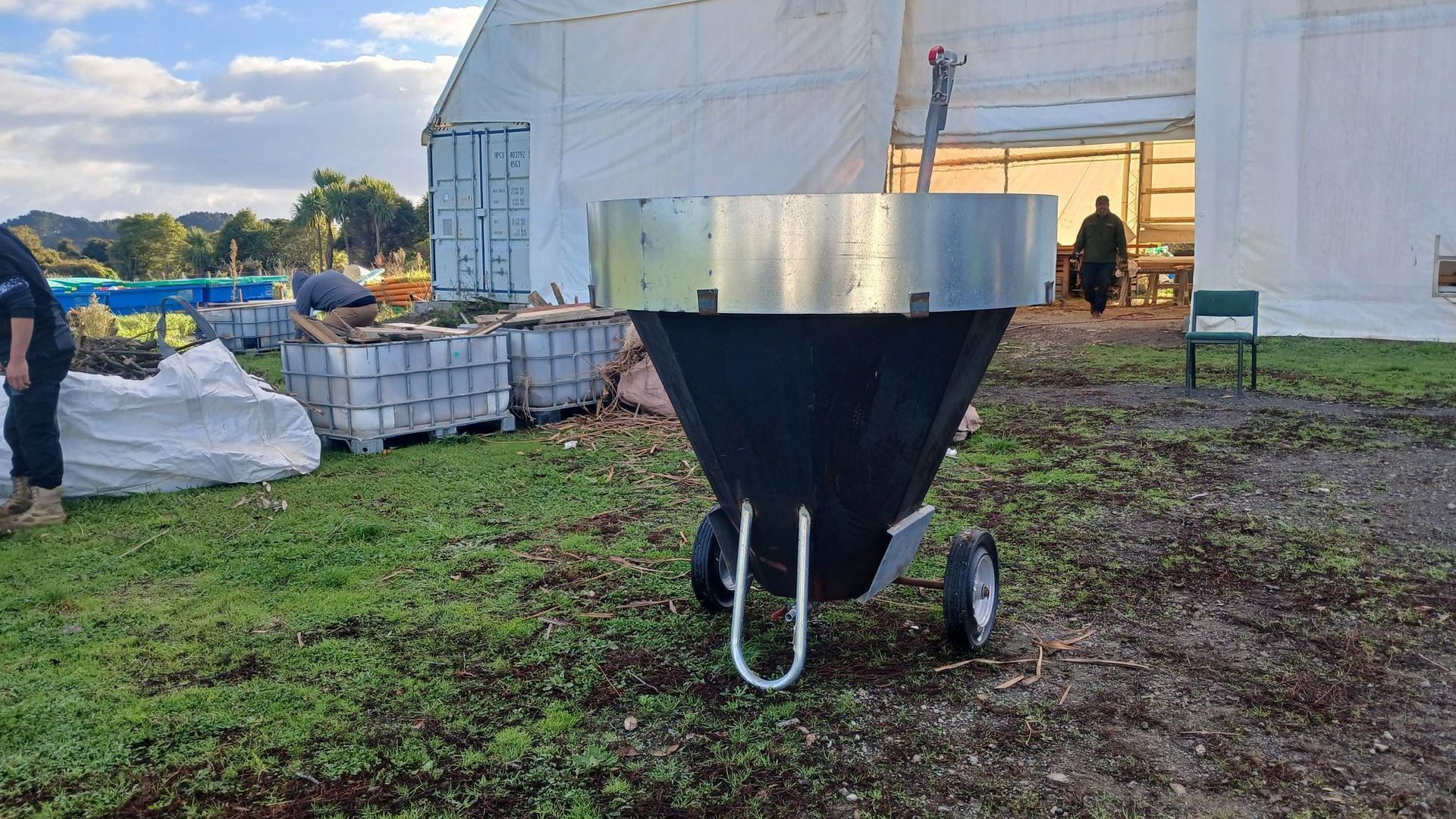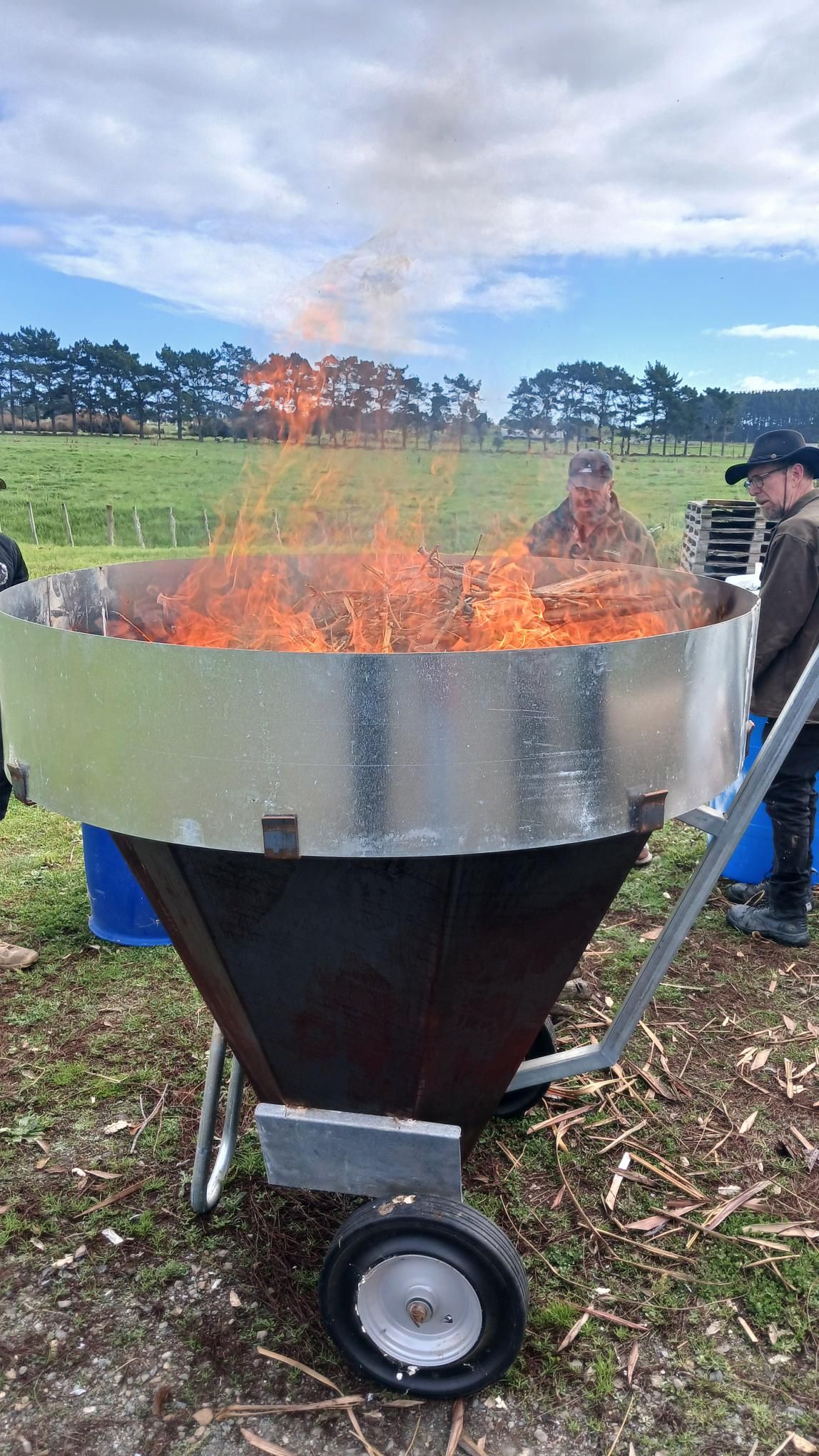Turning waste into black gold at te wānanga o raukawa

Biochar kiln at Te Wānanga o Raukawa campus
27 June 2025
New to Campus
Exciting things are happening at Te Wānanga o Raukawa—we’ve welcomed a brand-new 600-litre biochar kiln to campus! This clever contraption transforms organic waste into biochar, a super-soil booster and natural water filter, all while helping us cut down on landfill and carbon emissions.
Thanks to a government Waste Levy Business Grant through the Kapiti Coast District Council, we covered half the cost. The grant was approved in December 2024, and we sourced the kiln from Coolstuff Community Ltd in Ashhurst. A big shoutout to owner Philip Stevens for making it happen!
What’s So Cool About Biochar?
Biochar is like black gold for the whenua. It’s made by burning organic material in a low-smoke, oxygen-smart kiln. Once activated (think soaking it in worm juice or seaweed brew, or sprinkling it on a worm farm), it can be mixed into soil to help plants thrive and trap carbon. Non-activated biochar also works wonders as a water filter!
And here’s a creative twist—our local weavers are experimenting with biochar as a natural dye for harakeke, similar to traditional paru.
Learning the Ropes
Before the kiln arrived, our awesome kaimahi Kayzian Bevan and Darren Parata headed to a hands-on workshop in Kuku (just north of Ōtaki) in May 2024. They learned everything from lighting the kiln with minimal smoke, to choosing the right materials (like harakeke, wood chips, mussel shells, and untreated timber), and keeping the fire tended safely. They even connected with other eco-minded people keen to make a difference!
Custom-Made and Campus-Ready
Our kiln is a one-of-a-kind, trailer-style unit on wheels—easy to move and designed to burn cleanly thanks to its smart shape and airflow system. It’s based on ancient technology used around the world for centuries. Pretty amazing! Now, instead of sending organic waste to landfill, we dry it and turn it into biochar right here on campus. That includes leftovers from carving workshops, garden clippings, and even mussel shells!

First Burn, Big Impact
Our first burn workshop took place on 20 May 2025, with staff, students, and Phil Stevens leading the way. The biochar produced captured around half a tonne of CO₂ equivalent—that’s the same as:
- Burning 200 litres of petrol
- Driving 2,500 km in a petrol car
- One return flight from Auckland to Sydney
And when added to soil, biochar helps microbes grow, which absorb even more CO₂. A win-win situation!
Looking Ahead
This initiative was sparked after the opening of our Living Building Challenge Pā Reo site in 2023, when we had to pay thousands to dispose of untreated timber waste. That experience got us thinking—what if we could manage our own waste sustainably?
Now, with the kiln in place and our 2025–2027 Strategic Plan guiding us, we’re on track to create a full-circle biochar process for untreated wood waste by 2027. Next up: more workshops, more learning, and hopefully welcoming marae, kura, and others to join the journey!

Burning organic waste in the biochar kiln
If you would like to know about our academic programmes, go to: Our Courses

